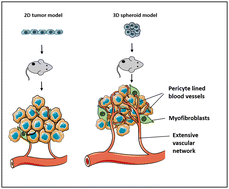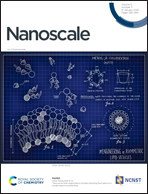An ovarian spheroid based tumor model that represents vascularized tumors and enables the investigation of nanomedicine therapeutics†
Abstract
The failure of cancer therapies in clinical settings is often attributed to the lack of a relevant tumor model and pathological heterogeneity across tumor types in the clinic. The objective of this study was to develop a robust in vivo tumor model that better represents clinical tumors for the evaluation of anti-cancer therapies. We successfully developed a simple mouse tumor model based on 3D cell culture by injecting a single spheroid and compared it to a tumor model routinely used by injecting cell suspension from 2D monolayer cell culture. We further characterized both tumors with cellular markers for the presence of myofibroblasts, pericytes, endothelial cells and extracellular matrix to understand the role of the tumor microenvironment. We further investigated the effect of chemotherapy (doxorubicin), nanomedicine (Doxil®), biological therapy (Avastin®) and their combination. Our results showed that the substantial blood vasculature in the 3D spheroid model enhances the delivery of Doxil® by 2.5-fold as compared to the 2D model. Taken together, our data suggest that the 3D tumors created by simple subcutaneous spheroid injection represents a robust and more vascular murine tumor model which is a clinically relevant platform to test anti-cancer therapy in solid tumors.



 Please wait while we load your content...
Please wait while we load your content...